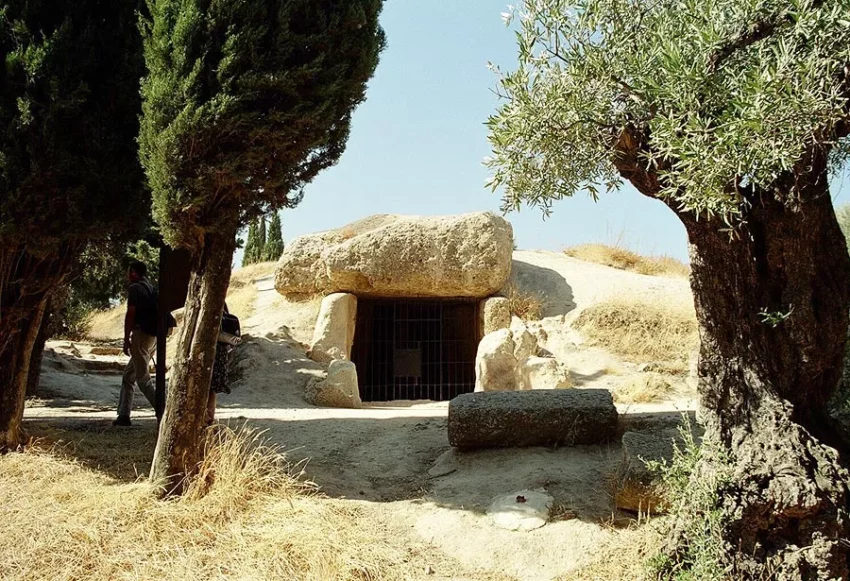The Majestic Dolmen of Menga: A Marvel of Ancient Architecture
The Dolmen of Menga, near Antequera, Málaga, Spain, is a marvel of ancient architecture. This megalithic burial mound, also known as a tumulus, dates back to around 3750–3650 BC. It stands as one of the largest and most impressive megalithic structures in Europe.
Get your dose of History via Email
A Colossal Structure: Testament to Ancient Ingenuity
The Dolmen of Menga measures a staggering 27.5 meters in length, 6 meters in width, and 3.5 meters in height. Constructed from thirty-two massive megaliths, the largest of these stones weighs about 180 tonnes. The sheer size of this structure is awe-inspiring, a testament to the ingenuity and strength of the people who built it.
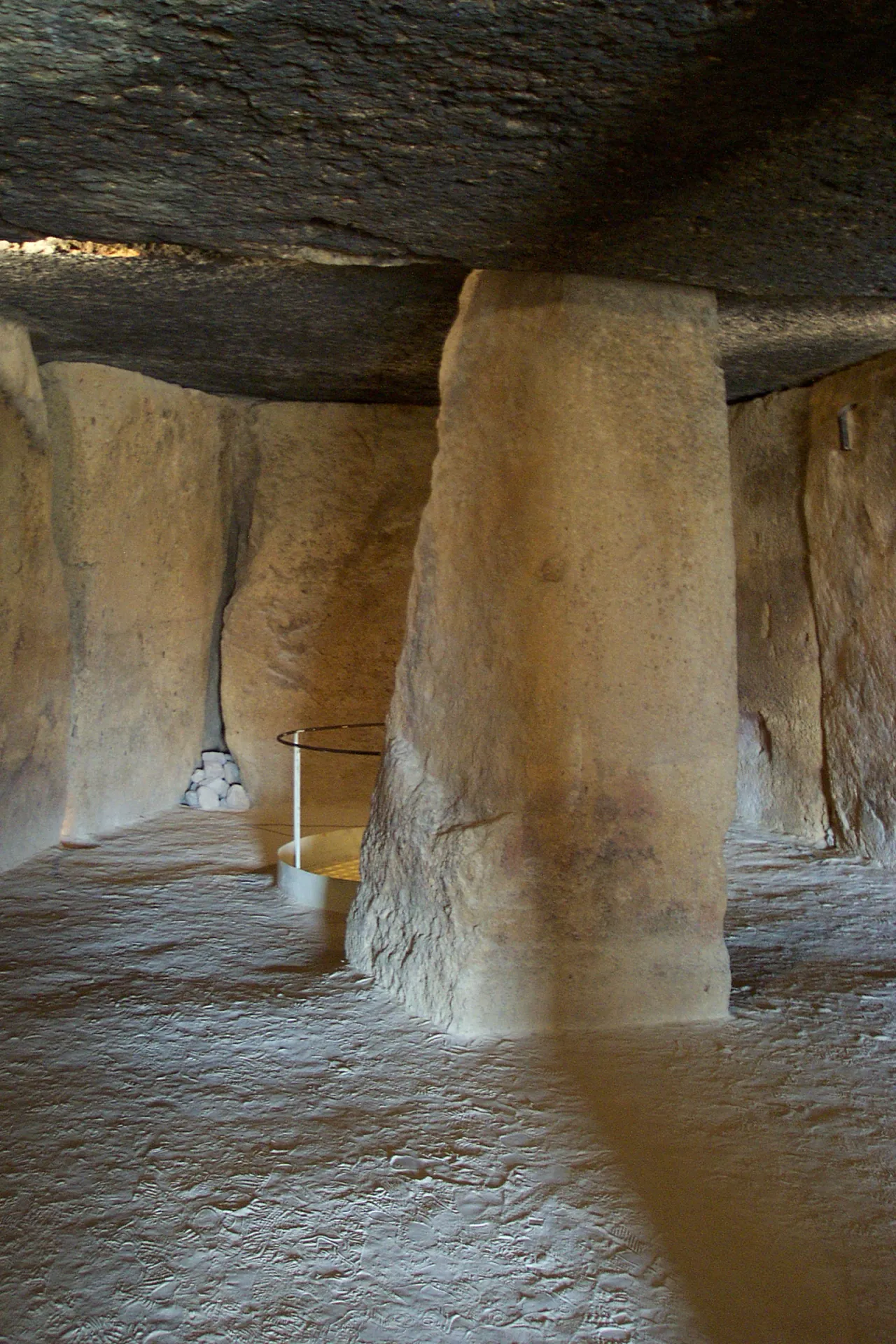
Inside the Ancient Chamber: A Glimpse into Burial Practices
Upon completing the chamber, likely used as a grave for ruling families or important figures, builders covered it with soil, forming the hill we see today. When archaeologists opened the grave in the 19th century, they discovered the remains of several hundred people inside. This discovery offered a glimpse into the burial practices of the era, though the exact social status of those interred remains a topic of discussion.

Proximity to Other Ancient Sites: The Antequera Dolmens Site
The Dolmen of Menga lies 70 meters from the Dolmen de Viera and about 4 kilometers from the Tholos de El Romeral. In 2016, these three sites were inscribed as a UNESCO World Heritage Site, recognized as the “Antequera Dolmens Site.” This inscription highlights their historical and cultural significance.
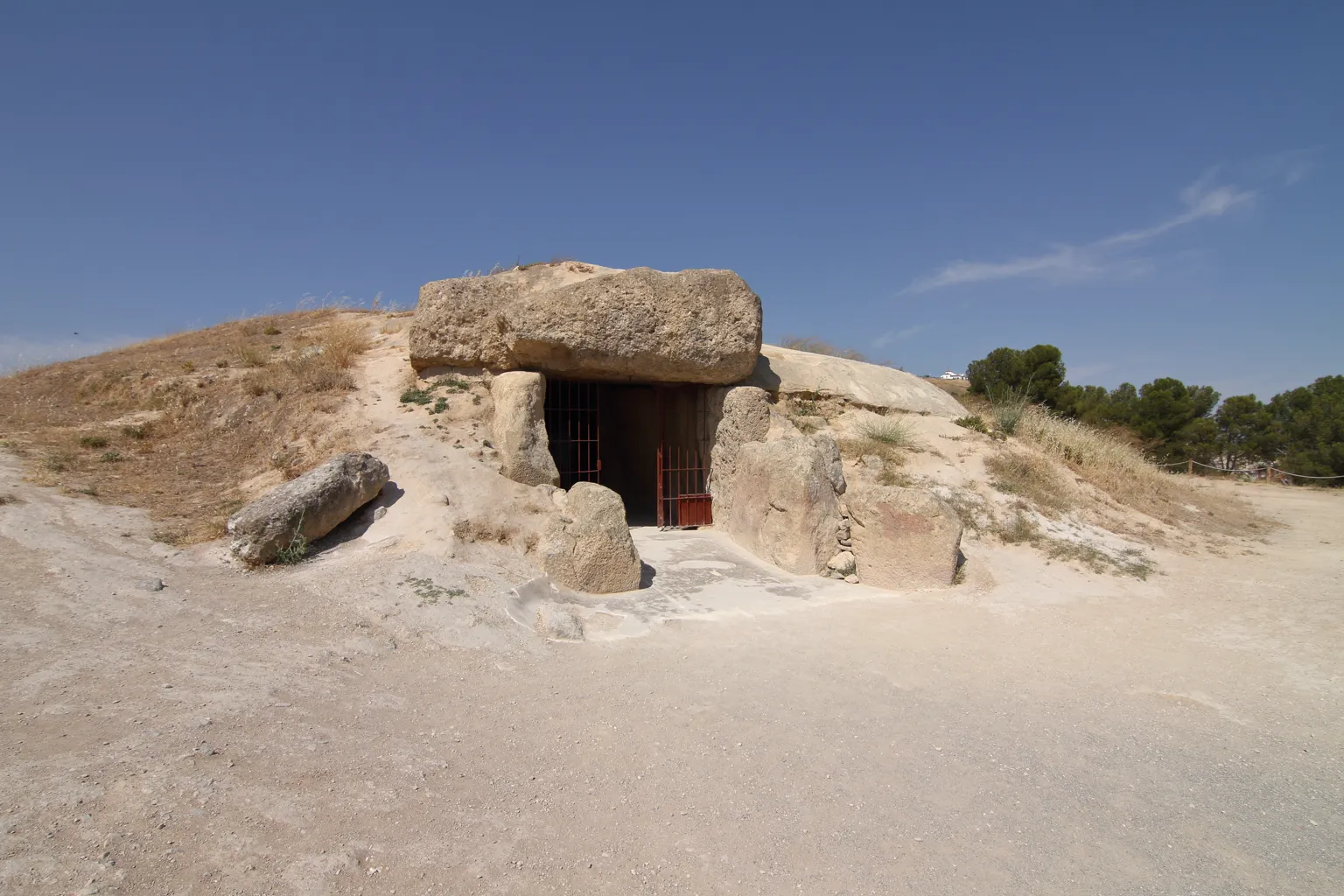
The Unique Abrigo de Matacabras: A Solar Connection
The Abrigo de Matacabras, located at the foot of Peña de los Enamorados, has a special connection to the Dolmen of Menga. The central axis of the Menga dolmen points directly to this shelter. Oriented to the northeast, it aligns with the sunrise on the summer solstice. This makes it the only known tomb in Europe with such an orientation.
In 2018, a study by the ATLAS research group from the University of Seville examined the high-resolution analysis of the Abrigo de Matacabras’s cave paintings. The study confirmed the Neolithic origin of these artworks and their symbolic links to the Menga dolmen, suggesting a unique relationship between prehistoric people and the landscape.

Menga’s Architectural Significance: A Corridor Tomb
The Dolmen of Menga is a corridor tomb, following the Atlantic tradition of a covered gallery dolmen. Large vertical stones, known as orthostats, and horizontal stones form the structure. The burial chamber is 6 meters wide and 3.5 meters high. An atrium and corridor lead to this grand chamber.
A notable feature is the presence of a deep, narrow well at the chamber’s end. This well, along with anthropomorphic engravings depicting human figures on the first orthostat, adds to the site’s uniqueness. Covered by a 50-meter diameter mound, the structure’s magnitude is extraordinary.
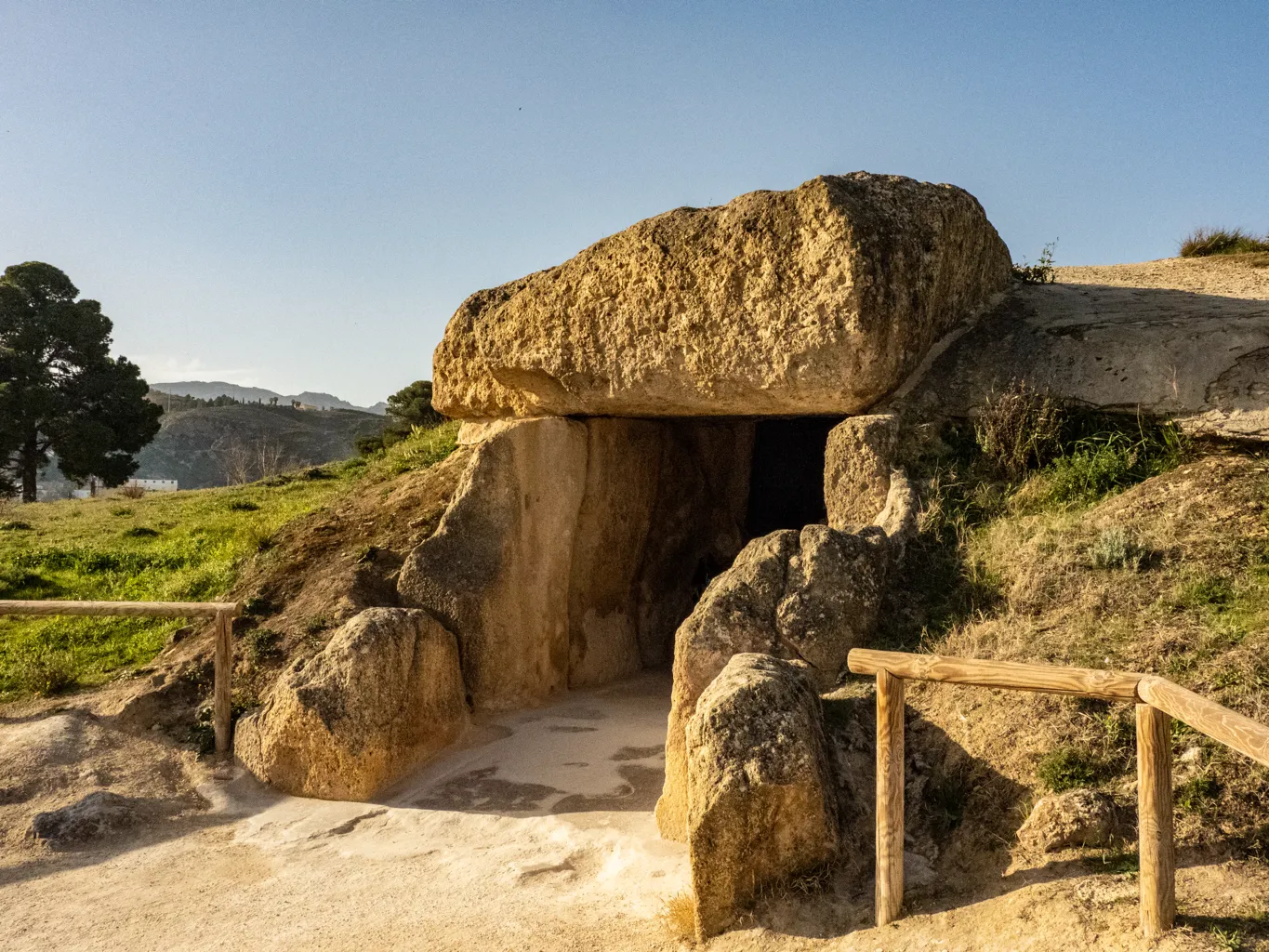
A Rich Historical Legacy: From Early Mentions to Conservation Efforts
The first recorded mention of the Menga dolmen dates back to 1530, with a license from the Bishop of Malaga. Throughout the 17th and 18th centuries, it appeared in numerous publications. In 1847, Rafael Mitjana y Ardison, a Malaga architect, wrote the first scientific monograph on the dolmen.
Conservation efforts since the mid-20th century have preserved its structure and appearance, ensuring its authenticity remains intact. The dolmen’s exceptional universal value lies in its monumentality and unique orientation towards Peña de los Enamorados.
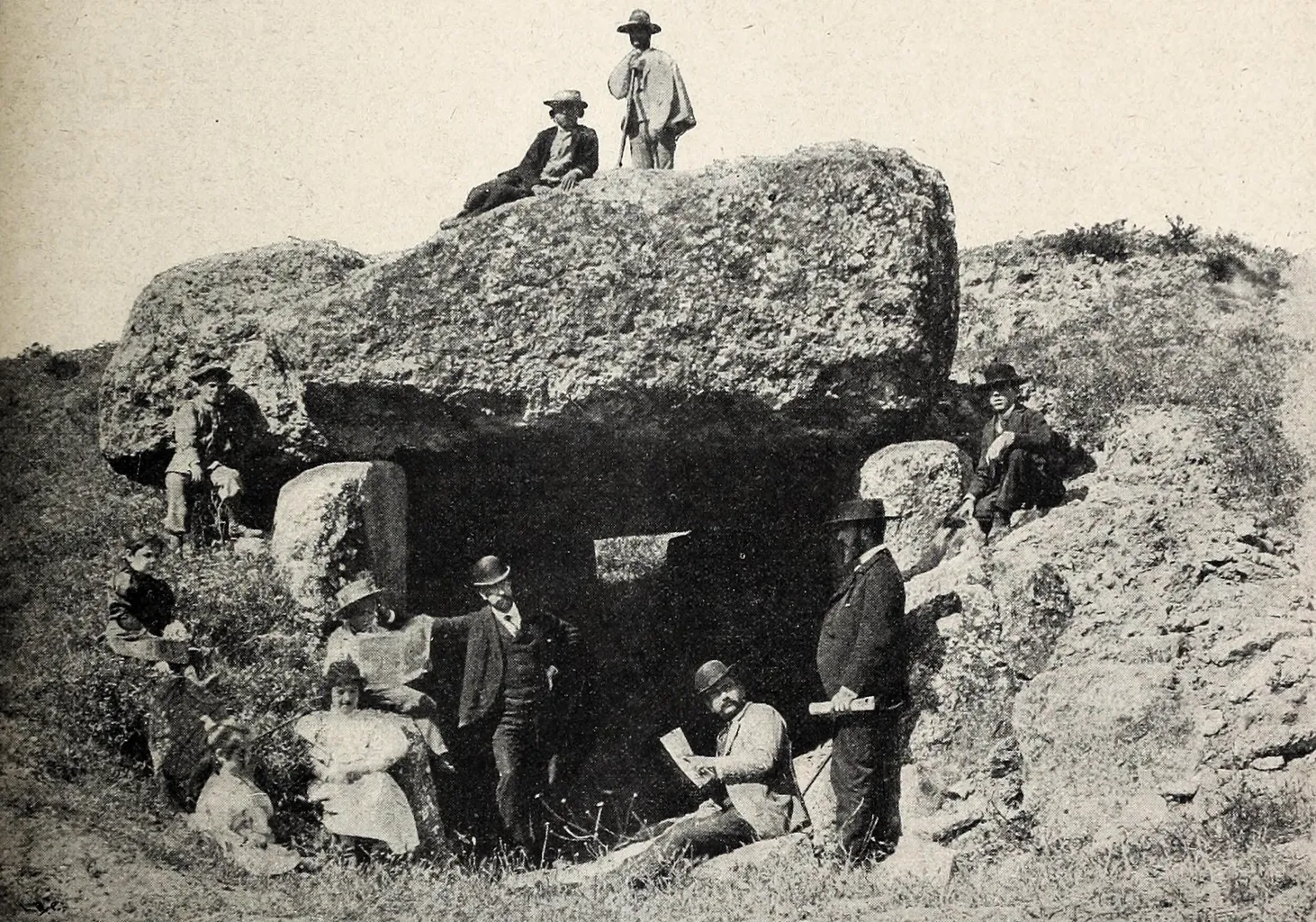
Cultural and Archaeological Recognition: A UNESCO World Heritage Site
In 1886, the Dolmen of Menga was declared a National Monument. This status expanded in 1923 to include the Dolmen de Viera. By 2009, the entire Antequera dolmens complex, including El Romeral, was recognized as an Archaeological Zone. The UNESCO World Heritage designation in 2016 further solidified its global cultural significance.
The Dolmen of Menga stands as a monumental symbol of ancient human ingenuity. Its impressive size, unique features, and rich history make it a site of immense cultural and historical importance.
Sources:


